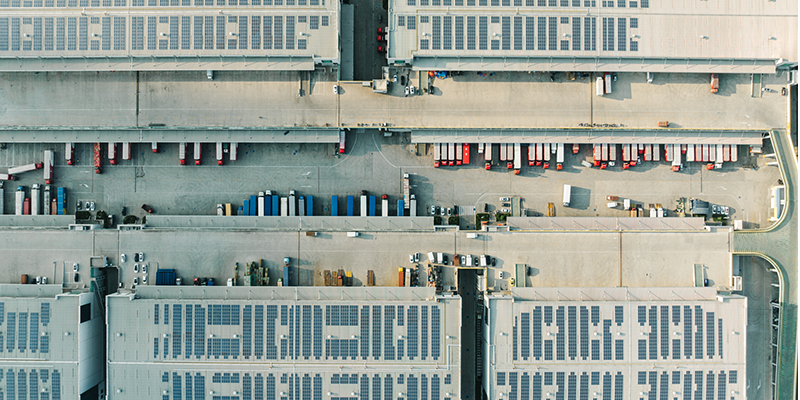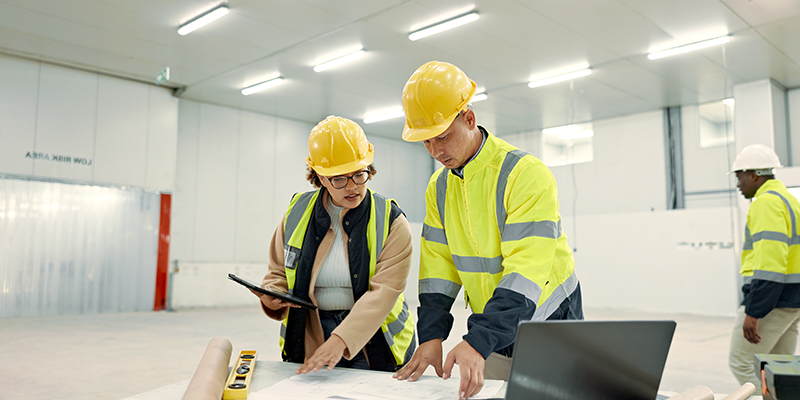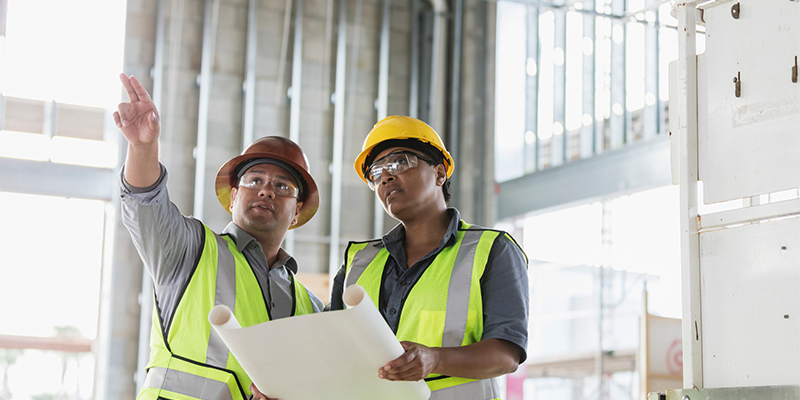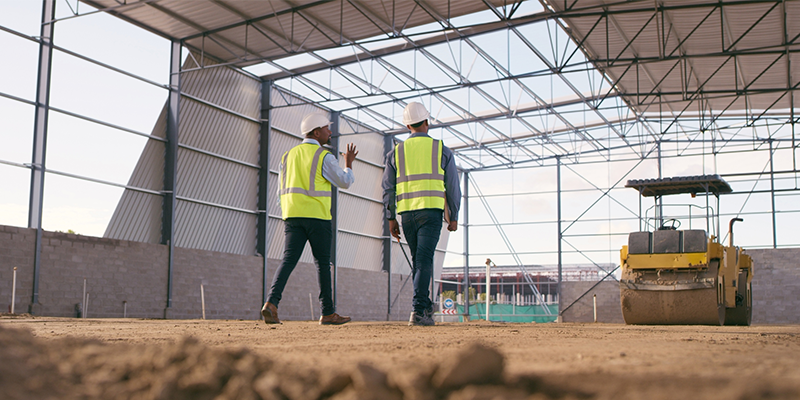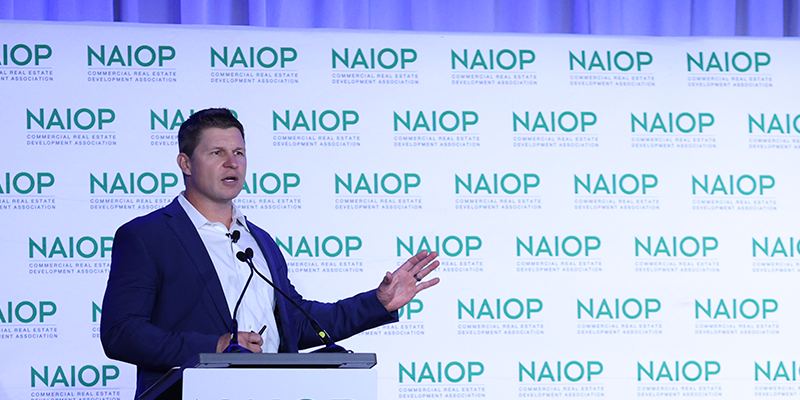By Marie Ruff
The cold storage sector is evolving, bringing fresh challenges and exciting opportunities. Shifting tenant demand, advancing regulations and a focus on energy efficiency and automation are driving innovation in operations and performance. In a session at NAIOP’s I.CON Cold Storage this week in Phoenix, a panel of experts unpacked key trends and addressed cold storage myths to help investors and operators navigate the market and capitalize on growth in a dynamic cold chain landscape.
Led by moderator Greg Camp, vice president, FCL Builders, the panel featured Michael Cody, practice leader and director, industrial cold and food, Ware Malcomb; Brian Hinkle, microgrid project development, Schneider Electric; Kurt Liebendorfer, vice president, Evapco, Inc.; and Adam Woda, director of strategic development, Dispatch Energy.
Myth #1: Power will always be available and good quality.
While not at the critical level that data centers demand, cold storage facilities nevertheless require huge amounts of power.
“There’s a two-pronged issue right now across the U.S., and whether you use power because you are a data center or you’re in cold storage, you’re facing the same two main issues: interconnection and cost,” Woda said.
“Ten years ago, you didn’t have to think about how long it would actually take to get power, but right now, it’s a key consideration in your project development timeline,” Woda said. “The utilities are just really not prepared, and our power distribution system is not prepared for the amount of load growth that we’re currently seeing on it.”
The challenge is not only securing power but also ensuring quality power with limited outages. Power plant retirements and surging power loads will increase the risk of outages by 100 times by 2030, according to the Department of Energy.
“Each state and each utility in the U.S. is almost like its own separate country,” said Woda, complicating the calculus further. “If you’re looking at something in Massachusetts, it may be entirely different from a financial perspective versus something in Iowa, even down to county level, so that’s important to keep in mind.”
Woda’s company has used different natural gas and battery storage solutions that they can slot into existing development to speed up utility interconnection timelines. His company is seeing lead times of two to three years with the current power supply-demand imbalance; using their stable of solutions, they can get a system online in three to six months.
Other possible solutions to the power problem include microgrids – on-site energy storage – and alternative energy storage like solar power, battery energy storage and fuel cells that are becoming more widely available and economically viable, according to Hinkle.
“Historically in the U.S., power prices have risen by 1% to 3% per year, somewhat in line with inflation, sometimes a bit more, but we’ve seen power prices go up by as much as 30% since 2020,” Woda said, citing data from the Federal Reserve Bank of St. Louis. “This sort of astronomical growth in a non-linear fashion ends up taking up a bigger chunk of operating expenses than most cold storage operators have anticipated.”
Hinke noted that there are consultants available who can help developers understand both the technical and financial feasibility of how on-site generation help address the challenges of availability, reliability and cost.
Myth #2: There’s a clear winner for refrigeration systems in all cold storage buildings.
“It used to be simpler to pick a default design for a refrigeration system for cold storage; the legacy system was ammonia, but now you have options like CO2 and a freon industrial solution” that have emerged in the past 10 years, said Liebendorfer. “It’s tough to determine what is the best fit for your project,” he said, pointing to a dizzying array of factors to take into consideration including building location, local weather, automation, customer preferences, water usage, building size and heights, temperature levels and more.
Each refrigeration system has upsides and drawbacks, and must adhere to regulations from the Environmental Protection Agency.
“There isn’t one solution that fits all,” Liebendorfer said. He recommended consulting a refrigeration designer – ideally, an impartial one – who could evaluate each of the three major options and provide an educated decision for that specific facility.
Myth #3: It’s easier to retrofit a cold storage building than build a new one.
Camp asked the panelists how the risks compare for investors considering new builds versus retrofits, especially the hidden costs of retrofits versus the energy costs of a new build.
“The assumption is that the existing building is going to be quicker and cheaper, and I’m here to say that I think it costs just about the same to build a ground-up building as it does to convert one,” Cody said.
As with anything in cold storage, there are exceptions, Cody noted. “If you’re in California or you’re in downtown New York, if you’re somewhere where you’re the complexities associated with the entitlement phase are astronomical, you’re way better off going with a retrofit of an existing building,” Cody said.
“On the power side of the equation, once you have an interconnection position with a utility and they’ve agreed to plug you into the grid, there’s a lot of inherent value in that,” Woda said. “There are certain markets like California, Virginia, metro New York, where doing a brand new build and actually getting power to the site in a reasonable time is not impossible, but it’s in the three-year-plus range, and you’re going to have to go through a bridge power solution.”
“There are definitely newer options today than there were five years ago for how you get that bridge power and it’s from the financing side as well as the technology side,” Hinkle said.

